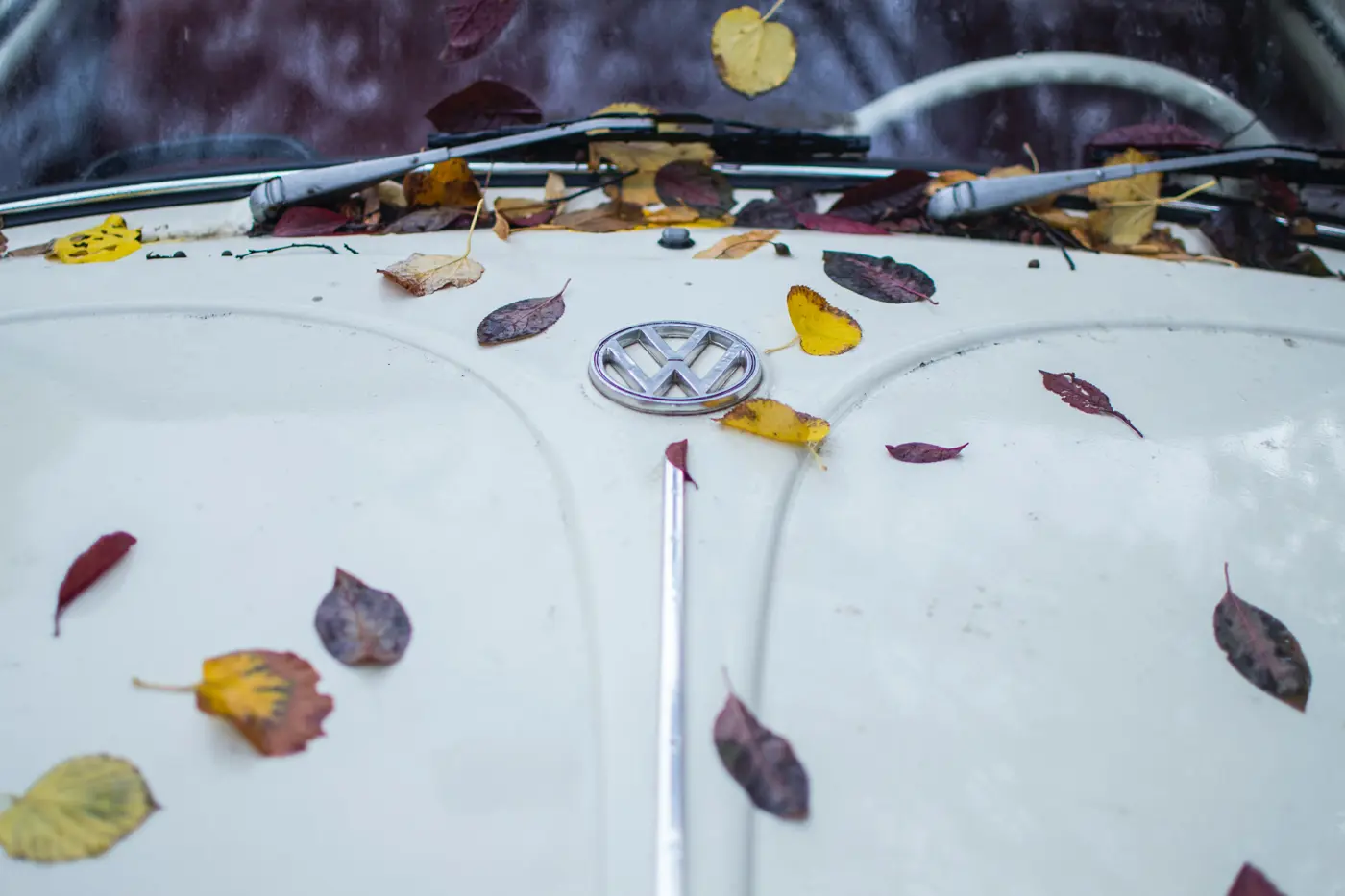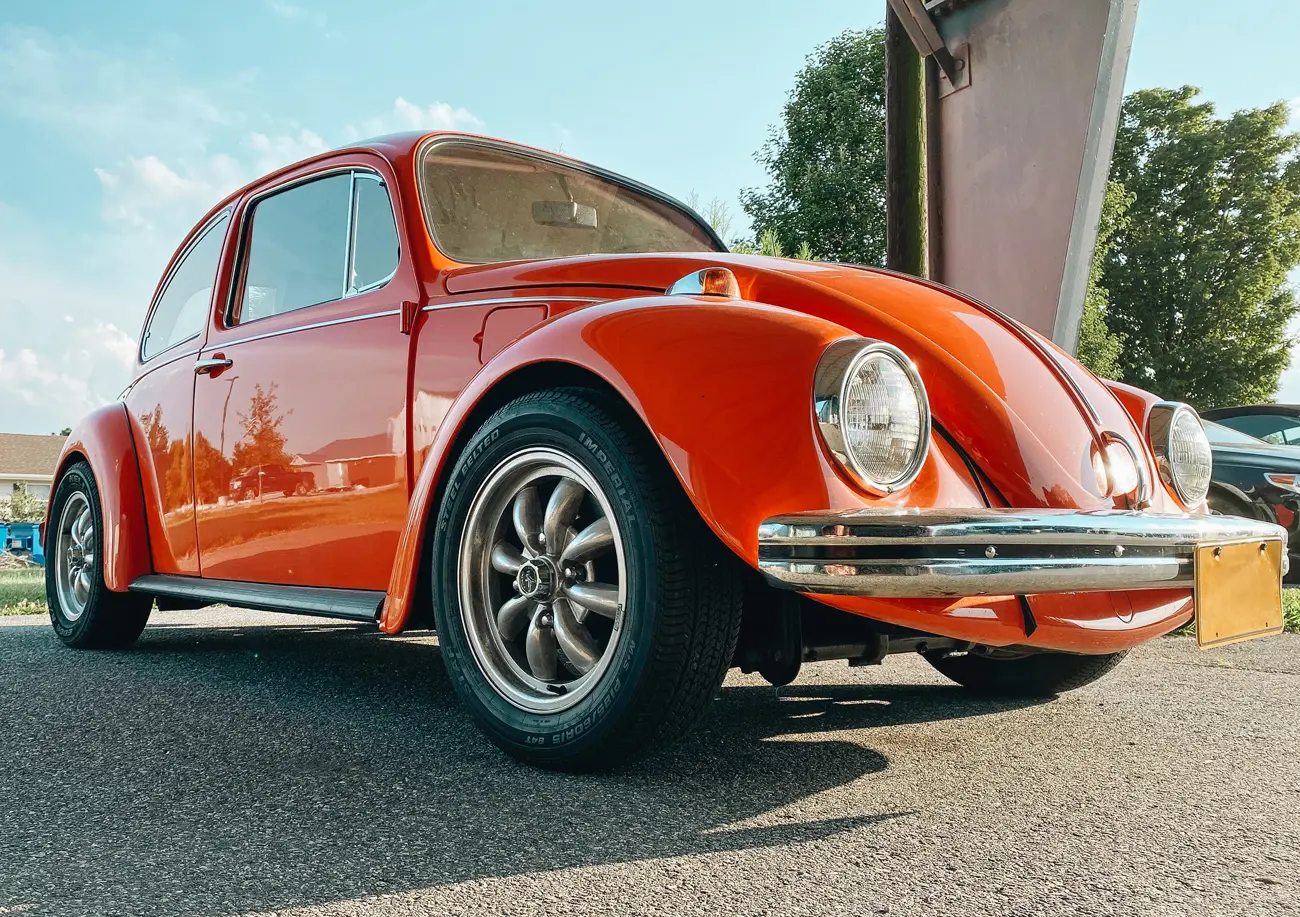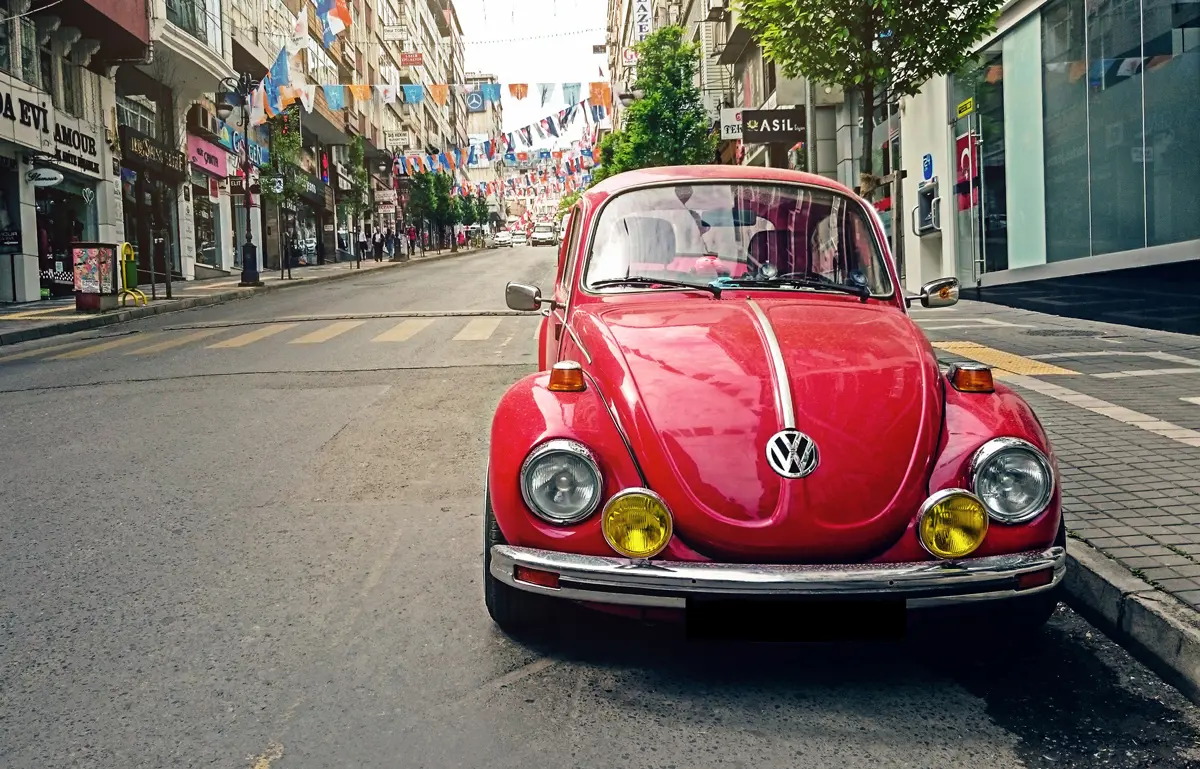8 fast facts about the VW Beetle
21 April 2021

The VW Beetle has claims to be one of the best cars to ever go into production. Designed to be the ‘people’s car’, its appeal spanned cultures and generations, going on to become one of the best-selling cars of all time. It remained in production for more than 80 years, with Volkswagen eventually calling time in 2019.
With such a long and illustrious history, it’s perhaps scant surprise that the story of the VW Beetle is an interesting one.
In this article, we’re going to tell that story by looking at some of the best facts about the Beetle – from its rather dark origins to its moment in the sun as a pop icon.
The Beetle might have ceased production, but its story lives on with classic car enthusiasts who can’t resist the Bug’s graceful curved lines. Not only is the Beetle a good car to work on, it’s also often relatively cheap to insure.
If you’re a Beetle owner seeking some affordable cover, speak to Lancaster. We can offer classic car cover for static shows, historical rallies, restoration projects and more.
Let’s take a closer look at the brilliant Bug…
-
An 18-year-old technology student is credited with the initial concept
The notion of a ‘people’s car’ was first raised in Germany in 1904. An article published in a journal called Der Motorwagen put forward the advantages of a mass-produced vehicle to take over from the motorcycle, the most popular form of transport at the time.
So began the engineering challenge to create the technical concept. But it wasn’t until 1925, when 18-year-old technology student Béla Barényi designed the perfect chassis, did the concept take a step forward.
His design included rear-wheel drive transmission, a boxer engine and air cooling; all elements later characteristic of the Beetle.
However, it wouldn’t be until more than 10 years later that the Beetle would make it into production – a delay caused by unfavourable conditions such as high vehicle taxes and insufficient per capita income.

-
Hitler got the ‘people’s car’ off the ground
The VW Beetle might never have come into being if it wasn’t for Adolf Hitler. Hitler was determined to create a reliable car that hard-working German families could afford and met with automotive designer Ferdinand Porsche – founder of the Porsche company – in 1935 to make it happen.
Hitler gave Porsche a relatively simple brief – the car had to have five seats, be easy to maintain, cover the ground quickly on the autobahn and be affordable for the average person.
Porsche and his team worked tirelessly to add some substance to Barényi’s chassis design, but mass production of the Beetle was curtailed by the outbreak of the second world war in 1939.
Porsche was then accused by Czech car company Tatra of infringing several design patents, notably those by Hans Ledwinka, an Austrian engineer who Hitler was believed to have been a fan of.
Tatra wanted to take the matter to court, but then Hitler invaded Austria, seized its factory and banned Ledwinka’s VW-like prototypes from ever seeing the light of day.
The matter was eventually settled out of court in 1961 – but by then, Volkswagen and the Beetle had conquered the world.
-
The Beetle was initially shunned abroad
The Beetle has been a towering success across the world. But it wasn’t an overnight thing. When the Beetle was exported to the US in 1949, just two were sold in the first year.
The British took a similar stance and deemed it to be noisy and hideous. But, in truth, it might’ve just been too close to WWII ending for nations to forgive the Germans and support one of its exports.
It didn’t help that the Beetle was manufactured in a plant built by the Nazis in Wolfsburg, Germany.
The British were even given the opportunity to assume responsibility for the production of the Beetle from the VW factory in Wolfsburg. But no British car manufacturer was up for it, with them in agreement that "the vehicle does not meet the fundamental technical requirement of a motor-car”.
The general feeling was that it would prove a “completely uneconomic enterprise”. Oh dear...
In time, however, people accepted that the Beetle was pretty irresistible and they went out and bought the ‘people’s car’ in their droves.
Sales grew rapidly, and by the 1960s, hundreds of thousands of Bugs were sold every year, peaking at 570,000 in 1970. VW claims over 23 million Beetles have been made in total over the generations.

-
The “Think Small” campaign is what did it for the Americans
The ‘Think Small’ advertising campaign, launched in 1959, was a game changer for VW and its Beetle.
Devised by the New York agency Doyle Dane Bernbach, the ads placed a small car inside of what appeared to be a gigantic, solid-coloured room.
Written in fine print at the bottom of the ad were some of the advantages of owning a smaller vehicle. It was a move to lure consumers away from luxury cars towards something more practical.
The campaign wasn’t just a huge success – the Beetle would go on to become the biggest selling foreign-made car in America off the back of it – it would change marketing for good.
It ushered in a new era in marketing in which the product was associated with a way of living. Up until this point, brands were just trying to sell consumers a product, rather than a lifestyle.
This is something we’ve become used to – but this new wave of marketing was dubbed the ‘Creative Revolution’ at the time.
The man behind the "Think Small" tagline was Julian Koenig, who is widely regarded as one of the 20th century’s most innovative advertising writers.
Koenig coined the name "Earth Day" in 1970, an annual event to demonstrate support for environmental protection, which continues to run to this day. He also came up with Timex’s iconic “It takes a licking and keeps on ticking” tagline.
-
It has many nicknames across the world
It might have been officially known as the Volkswagen Type 1, but the Beetle or the Bug – as we know it colloquially on these shores – is rarely called by its official title.
Much like the VW Type 2 – or the Transporter/Camper as it’s better known – the Type 1 picked up all kinds of nicknames as it was exported to all corners of the world. Here is just a handful of the best nicknames:
- Boble (bubble) in Norway
- Foxi or Foxy in Pakistan
- Garbus (hunchback) in Poland
- Carocha (beetle) in Portugal
- Coccinelle (ladybug) in France
- Poncho in Chile and Venezuela
Almost every nickname is a local rendering of the word "beetle”, but as you can see, there are some exceptions to that rule.
Volkswagen, somewhat wisely, didn’t persist with calling it the Type 1, having realised they were onto a good thing by calling it the Beetle – it was much easier for marketing purposes, too!

-
The Beetle has appeared across popular culture
The Beetle is a pop culture icon in its own right, having been both the star and the supporting act in some of pop culture’s most memorable moments. Such an appearance can do wonders for a car’s price tag…
The Beetle with the number plate “LMW 28IF” on the cover of The Beatles' Abbey Road album was sold at auction for $23,000 in 1986.
It’s not entirely clear what the number plate stands for exactly. But as the story goes, it was a reference to the “Paul [McCartney) is dead” rumour which was flying around at the time.
However, practically everything on any Beatles record became clues in a composite narrative that McCartney had died in 1966 and been replaced by a lookalike. The Beatles had some very obsessive fans, lest we forget...
Here’s what McCartney had to say about the rumour: “Someone from the office rang me up and said, ‘Look, Paul, you’re dead.’ And I said, ‘Oh, I don’t agree with that.'” McCartney decided it wasn’t worth refuting the story right away: “It’ll probably be the best publicity we’ve ever had, and I won’t have to do a thing except stay alive.”
The Beetle was just as comfortable being the star of the show as it was sat looking pretty in the background. How can we forget Herbie? A “fictional sentient anthropomorphic 1963 Volkswagen Beetle”, Herbie was the star of six movies – plus a short-lived series – the most popular of which was 1968’s The Love Bug. The films brought in over a billion US dollars for Disney.
One of the original Herbies sold for $126,500 at an auction in 2015. The classic car insurance cover on that one must’ve been pricey!
-
A host of celebrities have become proud owners of a Beetle
A car as popular and iconic as the VW Beetle is always going to be a hit with celebrities. Jerry Seinfeld is a petrol head and has owned all manner of classic cars. However, it was a 1977 Beetle – the comedian’s first car – which spawned his love of all things four wheels.
He has owned at least two more since then: a 1952 blue Beetle that appeared in one episode of his Netflix show Comedians in Cars Getting Coffee, and a 1960 Beetle, which he sold for $121,000 in 2016.
Jay Leno is another celeb-cum-petrolhead to own a Beetle… or three. This will come as no surprise to anyone who has seen Leno’s incredible 286-car collection. The Beetles in his garage are no ordinary Bugs – he’s got three vintage models: a 1938 Beetle, a 1955 and a 1966.
Finally, film star Chris Pratt, who heads up the Jurassic World franchise, is not content with just being a mere classic car owner – he went to the effort of restoring a $2,500 1965 Beetle all by himself.
“Classic cars (this one is technically an antique) continue to get better with age. And it’s a dream come true to roll this one through the Hollywood hills,” he wrote proudly in a 2016 Instagram post of the renovated car.

-
It was once named the ‘crappest’ car in Britain
Not everyone thinks the VW Beetle is a triumph of engineering like we do. In fact, Richard Porter, author of Crap Cars, put the car at the top of his list of the ‘crappest’ cars in Britain.
“It's slow, it's noisy and it's uncomfortable,” he said in an attempt to back up his claim. The Austin Allegro, Suzuki X90, Morris Marina and Lada Riva make up the rest of the ‘top five’.
He said he knew putting the Beetle top was controversial, but the car was "a triumph of expectation over reality".
"In 1948 it was reasonably well built and reliable and sturdy and all those things people needed, which is fine – that was 1948," he told BBC News.
"I think the mangle was a good way to dry your clothes in 1948, but you wouldn't use one now."
Protect your investment with classic car insurance
If you do manage to get your hands on a classic Beetle, complete with a flower power vase, adequate classic car insurance is a must. In fact, whatever make and model of classic you buy, make sure you come to the specialists at Lancaster for a classic car insurance quote before you go anywhere else.
Did you know that Lancaster Insurance is the broker of choice for 96,000 owners of classic and retro vehicles in the UK?
Like you, the team at Lancaster is passionate about classic motors and we want to help preserve them for the future.
Benefits of classic car insurance through us can include:
- Up to 25% discount for classic car club members
- Salvage retention
- 90 days EU cover
- Static show cover
- Cover for historic rallies
- Limited mileage discounts
Two-year agreed valuations of classic cars can also be arranged. Just ask the team for more details.
Get a quote for classic car insurance today.
Policy benefits, features and discounts offered may very between insurance schemes or cover selected and are subject to underwriting criteria. Information contained within this article is accurate at the time of publishing but may be subject to change.
